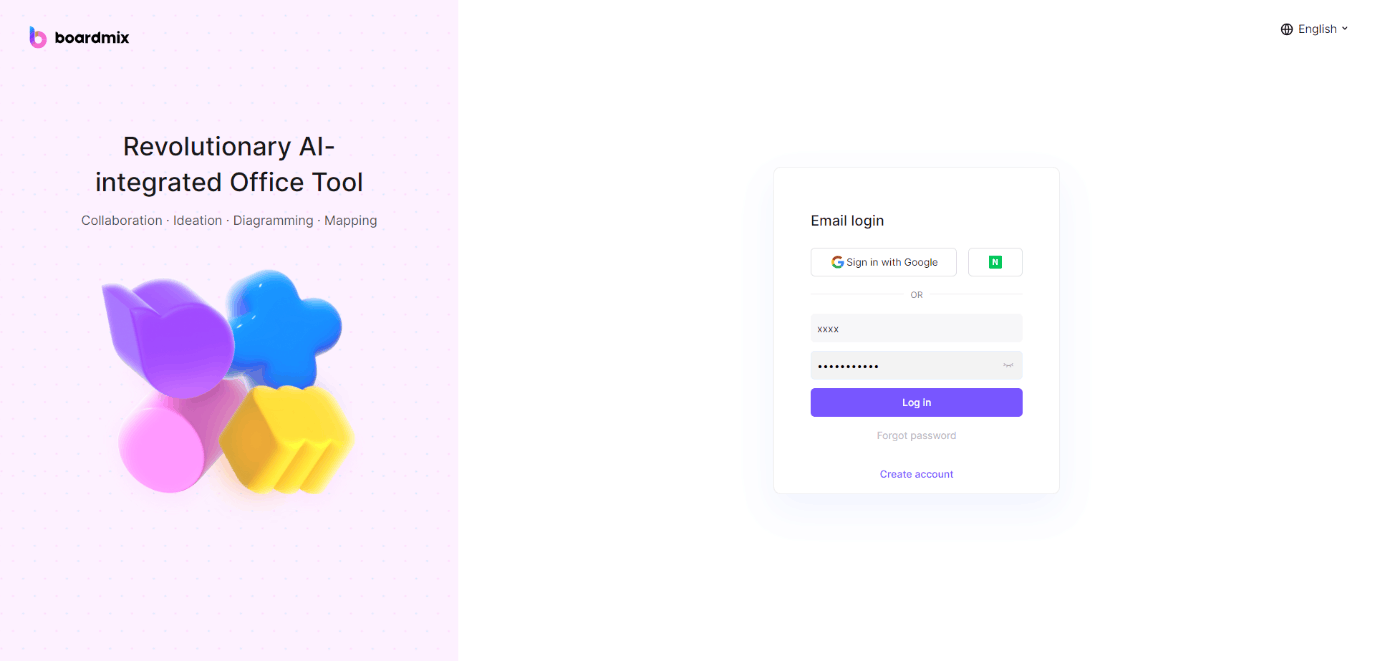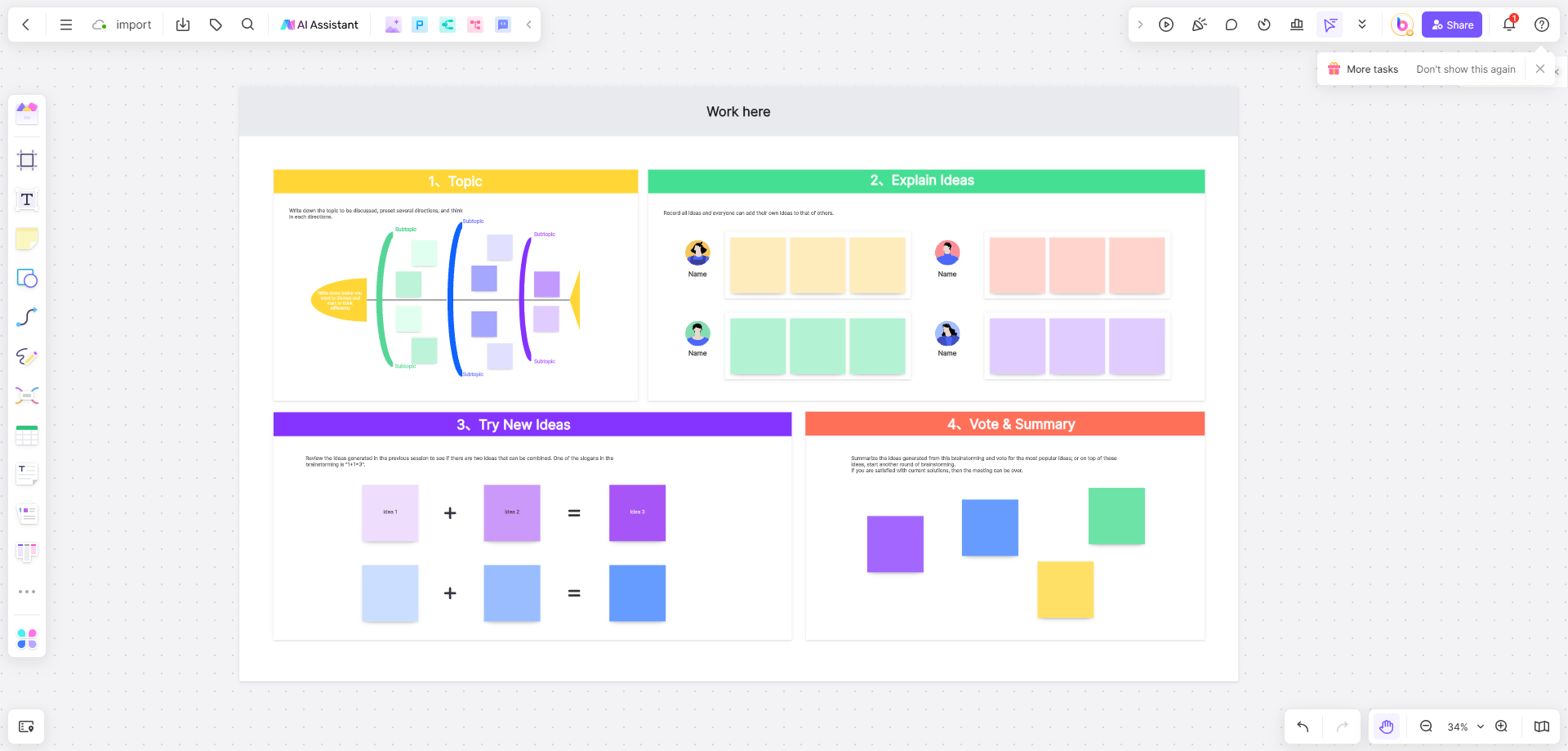Does your team use a reverse brainstorming template? Teams often prefer sticking to what they know at the expense of flagging their creative process. Can negative brainstorming compensate for the shortcomings of traditional brainstorming methods?
What is reverse brainstorming?
Reverse brainstorming combines brainstorming and reversal techniques. It’s a different approach to idea generation and problem-solving that turns the creative process upside down. It urges team members to flip the perspective—the objective is to come up with factors that worsen the issue. It does the opposite of brainstorming, which is to find solutions.

Build Reverse Brainstorming for Free
Also called negative brainstorming, this tool enables you to determine the root causes of a problem. More importantly, it helps you develop alternative solutions to pressing issues in your business or organization.
The key point of this method is reversing the ideas to come up with better answers to tackle an obstacle. It’s good to use when the normal brainstorming process doesn’t work. Using a reverse brainstorming template can make idea generation more engaging and fun, especially for remote teams.
How many steps are in reverse brainstorming?

Step 1: Define the problem
The first step to this technique is identifying the current paint points that are a top priority. If it’s a project, you can determine the problematic areas and include them on the list. For instance, when a team needs to increase sales, the biggest problem is how to attract customers.
Step 2: Reverse the problem
Once you define the issue, it’s now easy to think about the opposite outcome. If you need to gain more customers, then using the reversal technique, you must brainstorm the ways to lose customers.
Step 3: Collect ideas
Secondly, you need to brainstorm how to make these issues worse. Taking the example from the first step, making the problem worse could mean:
- Providing bad service and displaying a problematic attitude
- Sell poor quality and expensive products
- Slow turnaround and delivery times
Collecting ideas after applying the reverse technique is the next step of this process. You can ask team members to list their thoughts about the problems, underlying factors, causes, and actions that make them worse. Every idea counts—it’s better to accept the thoughts everyone nominates to broaden the selection.
Step 4: Reverse the ideas
All the underlying concepts based on the ideas provided need to be flipped to get the best solutions. Using the reverse brainstorming template, you must come up with positive outcomes as opposed to negative brainstorming ideas. That means finding ways to prevent these happenings from coming true, such as:
- Offering good quality and reasonably priced products
- Improve the service system
- Enhance the logistics process
Step 5: Identify solutions
After coming up with positive solutions, the next step is to evaluate the feasibility of each outcome. You should also consider the cost and impact and prioritize every idea according to your needs and resources. The solutions with the most potential should go on to the final selection.
Benefits of reverse brainstorming
Reverse brainstorming is a powerful tool that offers numerous benefits from fostering innovation to promoting team unity. So why not give it a try? Turn your thinking upside down and see what incredible ideas come pouring out!

Build Reverse Brainstorming for Free
First off, it's an effective tool for problem-solving. Traditional brainstorming methods have you seeking solutions, but reverse brainstorming flips the script. It asks you to think of ways to cause the problem instead. This unique perspective allows you to identify potential pitfalls and address them head-on, making your solution more robust and comprehensive.
Secondly, it encourages creativity and innovation. When you're asked to think in reverse or consider the worst-case scenarios, your mind is pushed out of its comfort zone. This leads to more innovative ideas that can lead to groundbreaking solutions.
Moreover, it promotes team collaboration. Reverse brainstorming requires a group effort where everyone's input is valued. This creates a sense of unity and fosters a positive work environment where everyone feels heard and appreciated.
Lastly, it's simply fun! The unconventional approach of reverse brainstorming adds an element of surprise and excitement to the process. It keeps participants engaged and motivated, leading to more productive sessions.
Reverse Brainstorming Template in Boardmix
1. Product Development Reverse Brainstorming
Problem: Customers are not satisfied with our product.
Reverse Question: What can we do to make sure our product is the worst in the market?
Ideas Generated:
- Sell the product at an unreasonably high price
- Ignore the customer feedback and suggestions
- Provide no after-sales service or support
- Make the product hard to use
The solution from Reverse Ideas:
- Offer competitive pricing for our product
- Actively seek and respond to customer feedback
- Establish an efficient after-sales service system
- Enhance the user-friendliness of the product
2. Customer Service Reverse Brainstorming
Problem: We are not retaining our customers.
Reverse Question: What can we do to drive our customers away?
Ideas Generated:
- Provide slow and unresponsive customer service
- Make our policies rigid and inflexible
- Show indifference to customer complaints
The solution from Reverse Ideas:
- Ensure quick and efficient customer service
- Implement flexible policies that cater to customer needs
- Address customer complaints promptly and effectively
3. Team Performance Reverse Brainstorming
Problem: Our team's performance is below par.
Reverse Question: How can we make our team perform even worse?
Ideas Generated:
- Promote a culture of blame and finger-pointing
- Give no recognition or rewards for good work
- Overload team members with work, creating burnout
The solution from Reverse Ideas:
- Encourage a supportive and collaborative team culture
- Recognize and reward excellent performance
- Balance workload among team members to prevent burnout
How to use a reverse brainstorming template in Boardmix
Boardmix provides the easiest reverse brainstorming template that’s easily accessible by all team members! Right off the page, you can see tabs corresponding to each step of the technique. Using sticky notes, you can fill in each section step-by-step until you come up with the best solution. Also, you can use the marker tool to tick off any item from the selection!

What makes this tool worth using is that it allows remote teams to engage in the brainstorming process. Everything happens in real-time online, so all participants can contribute without delay. It’s a convenient working style with almost no learning curve because of its user-friendly interface.
1. Access Boardmix
Log in to your Boardmix account or create a new one if you don't have an account already.

2. Select a Template
Browse through the available templates in Boardmix and choose the one that suits your needs. There is a reverse brainstorming template available in the template library, or you can select a general brainstorming template and customize it accordingly.

3. Customize the Template
Once you have selected a template, you can customize it according to your requirements. Add your prompts, questions, or datas to the template to align with the specific problem or topic you want to brainstorm about.

4. Invite Participants
Share the template with the participants of your guided brainstorming session. You can invite them via email or share a link to the template. Make sure everyone has access to the template and can contribute their ideas.

If your team faces a creative roadblock during brainstorming, you can give Boardmix a try!







